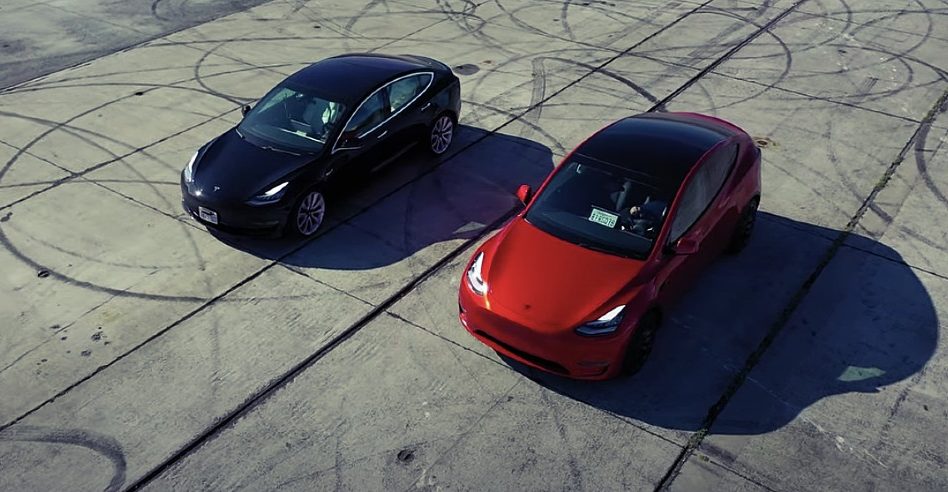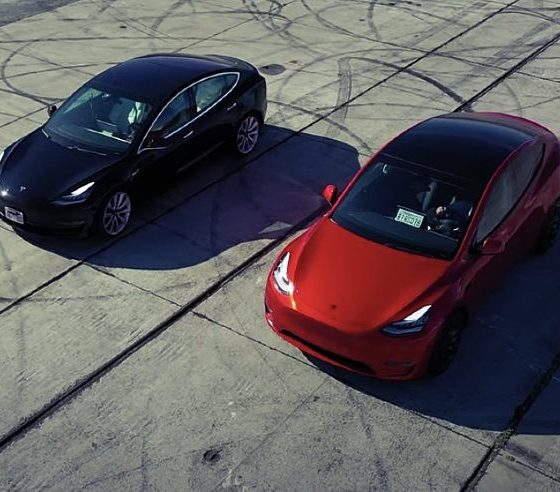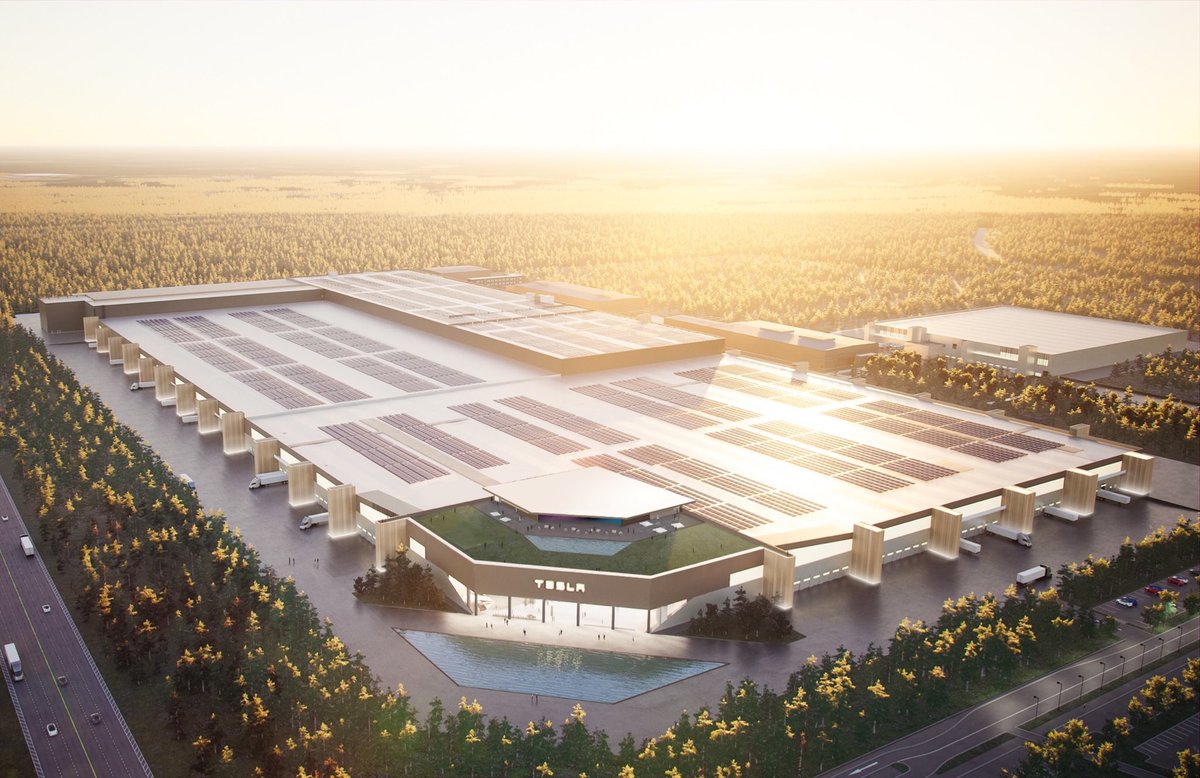

News
Tesla-obsessed German automakers look to solve multi-year tech deficit
Tesla’s electric vehicle technology is head and shoulders above the rest of the industry. Now, German car companies who are chasing after them are trying to figure out how the multi-year lead Tesla maintains over other automotive companies can be reduced. CEOs are becoming more vocal about the Elon Musk-headed company’s dominance in the electric vehicle sector.
Perhaps the most prominent relationship between Tesla and a German car company lies within Volkswagen’s executives. VW chairman Herbert Diess is an outspoken fan of Elon Musk and has admired the work the South African Tesla frontman has done to combat the spread of dangerous greenhouse gases.
Despite the respect that Volkswagen has for Tesla and Musk, the German car company has admitted that they trail by at ten years. However, Volkswagen executives believe they can catch up.
“Tesla is an impressive manufacturer,” Volkswagen’s electromobility board member Thomas Ulbrich said. “It is a motivator for us. Tesla has ten years more experience. But we are very quick in catching up.”
Volkswagen has combated software woes throughout the development of its ID.3 electric car. These delays have inevitably slowed down Volkswagen’s chase after Tesla, but the company continues to transition some of its German production plants toward electric vehicle manufacturing.

Audi is another German car company that has looked at Tesla as the leader in EV development. This company has focused on its e-Tron EV as its transitionary vehicle. Still, its CEO, Markus Duesmann, has stated that improving combustion engine vehicles will be the main focus moving forward. Electrification can come later.
Duesmann does believe the gas-powered engines that Audi manufactures can be improved and become more sustainable. “They have to be great,” he said. But ultimately, reducing emissions and increasing sustainability and eco-friendly transportation starts with ditching fossil fuels in general.
Duesmann also recently admitted that Tesla has a two year lead in critical areas of the industry, and said that the electric automaker is not ahead in terms of lithium-ion battery technology.
Nevertheless, Tesla’s fleet of EVs continues to improve, while Audi’s focus relies on extending the development of gas and diesel-powered machines.
Finally, BMW is ready to battle Tesla with its rendition, an all-electric 5-series sedan. The company plans to have around five million fully-electric vehicles on the road by 2030, which would mean half a million EVs sold per year.
BMW wants to take a chunk out of Tesla’s market, just like the other two automakers. But BMW’s 5-Series is one of its most popular cars. It sold 350,000 units in 2019, according to Barron’s, and the company believes it could be the key to catching up to Tesla within the next few years.
Tesla has a future in Germany that could end up being bad news for the domestic automakers who continue to set up shop in the European country. With Giga Berlin set to begin producing 500,000 vehicles annually starting July 2021, Tesla could dominate the German market for years to come. Especially considering Tesla’s intentions to manufacture a “completely new battery” at the German plant, automakers in the country must remain on notice.

Giga Berlin has been one of Elon Musk’s main points of focus since announcing the company’s plans to open a facility in November. The announcement and subsequent developments of the Berlin facility may have surged the German car giants to begin paying a little more attention to the next phase of the business.
All indications point toward sustainable and eco-friendly cars being the focus of consumers for years to come. Adapting to and developing these cars takes plenty of time, and while German companies are getting started, the saying “better late than never” comes to mind.

Elon Musk
Elon Musk and Tesla AI Director share insights after empty driver seat Robotaxi rides
The executives’ unoccupied tests hint at the rapid progress of Tesla’s unsupervised Robotaxi efforts.

Tesla CEO Elon Musk and AI Director Ashok Elluswamy celebrated Christmas Eve by sharing personal experiences with Robotaxi vehicles that had no safety monitor or occupant in the driver’s seat. Musk described the system’s “perfect driving” around Austin, while Elluswamy posted video from the back seat, calling it “an amazing experience.”
The executives’ unoccupied tests hint at the rapid progress of Tesla’s unsupervised Robotaxi efforts.
Elon and Ashok’s firsthand Robotaxi insights
Prior to Musk and the Tesla AI Director’s posts, sightings of unmanned Teslas navigating public roads were widely shared on social media. One such vehicle was spotted in Austin, Texas, which Elon Musk acknowleged by stating that “Testing is underway with no occupants in the car.”
Based on his Christmas Eve post, Musk seemed to have tested an unmanned Tesla himself. “A Tesla with no safety monitor in the car and me sitting in the passenger seat took me all around Austin on Sunday with perfect driving,” Musk wrote in his post.
Elluswamy responded with a 2-minute video showing himself in the rear of an unmanned Tesla. The video featured the vehicle’s empty front seats, as well as its smooth handling through real-world traffic. He captioned his video with the words, “It’s an amazing experience!”
Towards Unsupervised operations
During an xAI Hackathon earlier this month, Elon Musk mentioned that Tesla owed be removing Safety Monitors from its Robotaxis in Austin in just three weeks. “Unsupervised is pretty much solved at this point. So there will be Tesla Robotaxis operating in Austin with no one in them. Not even anyone in the passenger seat in about three weeks,” he said. Musk echoed similar estimates at the 2025 Annual Shareholder Meeting and the Q3 2025 earnings call.
Considering the insights that were posted Musk and Elluswamy, it does appear that Tesla is working hard towards operating its Robotaxis with no safety monitors. This is quite impressive considering that the service was launched just earlier this year.
Elon Musk
Starlink passes 9 million active customers just weeks after hitting 8 million
The milestone highlights the accelerating growth of Starlink, which has now been adding over 20,000 new users per day.

SpaceX’s Starlink satellite internet service has continued its rapid global expansion, surpassing 9 million active customers just weeks after crossing the 8 million mark.
The milestone highlights the accelerating growth of Starlink, which has now been adding over 20,000 new users per day.
9 million customers
In a post on X, SpaceX stated that Starlink now serves over 9 million active users across 155 countries, territories, and markets. The company reached 8 million customers in early November, meaning it added roughly 1 million subscribers in under seven weeks, or about 21,275 new users on average per day.
“Starlink is connecting more than 9M active customers with high-speed internet across 155 countries, territories, and many other markets,” Starlink wrote in a post on its official X account. SpaceX President Gwynne Shotwell also celebrated the milestone on X. “A huge thank you to all of our customers and congrats to the Starlink team for such an incredible product,” she wrote.
That growth rate reflects both rising demand for broadband in underserved regions and Starlink’s expanding satellite constellation, which now includes more than 9,000 low-Earth-orbit satellites designed to deliver high-speed, low-latency internet worldwide.
Starlink’s momentum
Starlink’s momentum has been building up. SpaceX reported 4.6 million Starlink customers in December 2024, followed by 7 million by August 2025, and 8 million customers in November. Independent data also suggests Starlink usage is rising sharply, with Cloudflare reporting that global web traffic from Starlink users more than doubled in 2025, as noted in an Insider report.
Starlink’s momentum is increasingly tied to SpaceX’s broader financial outlook. Elon Musk has said the satellite network is “by far” the company’s largest revenue driver, and reports suggest SpaceX may be positioning itself for an initial public offering as soon as next year, with valuations estimated as high as $1.5 trillion. Musk has also suggested in the past that Starlink could have its own IPO in the future.
News
NVIDIA Director of Robotics: Tesla FSD v14 is the first AI to pass the “Physical Turing Test”
After testing FSD v14, Fan stated that his experience with FSD felt magical at first, but it soon started to feel like a routine.

NVIDIA Director of Robotics Jim Fan has praised Tesla’s Full Self-Driving (Supervised) v14 as the first AI to pass what he described as a “Physical Turing Test.”
After testing FSD v14, Fan stated that his experience with FSD felt magical at first, but it soon started to feel like a routine. And just like smartphones today, removing it now would “actively hurt.”
Jim Fan’s hands-on FSD v14 impressions
Fan, a leading researcher in embodied AI who is currently solving Physical AI at NVIDIA and spearheading the company’s Project GR00T initiative, noted that he actually was late to the Tesla game. He was, however, one of the first to try out FSD v14.
“I was very late to own a Tesla but among the earliest to try out FSD v14. It’s perhaps the first time I experience an AI that passes the Physical Turing Test: after a long day at work, you press a button, lay back, and couldn’t tell if a neural net or a human drove you home,” Fan wrote in a post on X.
Fan added: “Despite knowing exactly how robot learning works, I still find it magical watching the steering wheel turn by itself. First it feels surreal, next it becomes routine. Then, like the smartphone, taking it away actively hurts. This is how humanity gets rewired and glued to god-like technologies.”
The Physical Turing Test
The original Turing Test was conceived by Alan Turing in 1950, and it was aimed at determining if a machine could exhibit behavior that is equivalent to or indistinguishable from a human. By focusing on text-based conversations, the original Turing Test set a high bar for natural language processing and machine learning.
This test has been passed by today’s large language models. However, the capability to converse in a humanlike manner is a completely different challenge from performing real-world problem-solving or physical interactions. Thus, Fan introduced the Physical Turing Test, which challenges AI systems to demonstrate intelligence through physical actions.
Based on Fan’s comments, Tesla has demonstrated these intelligent physical actions with FSD v14. Elon Musk agreed with the NVIDIA executive, stating in a post on X that with FSD v14, “you can sense the sentience maturing.” Musk also praised Tesla AI, calling it the best “real-world AI” today.








